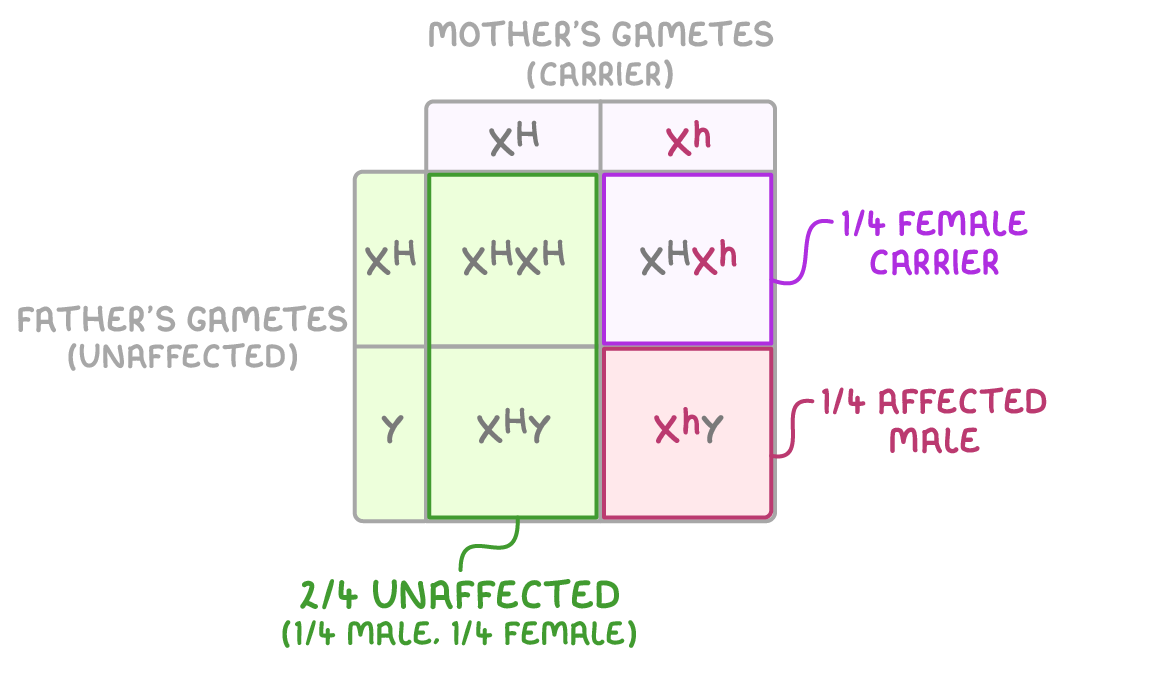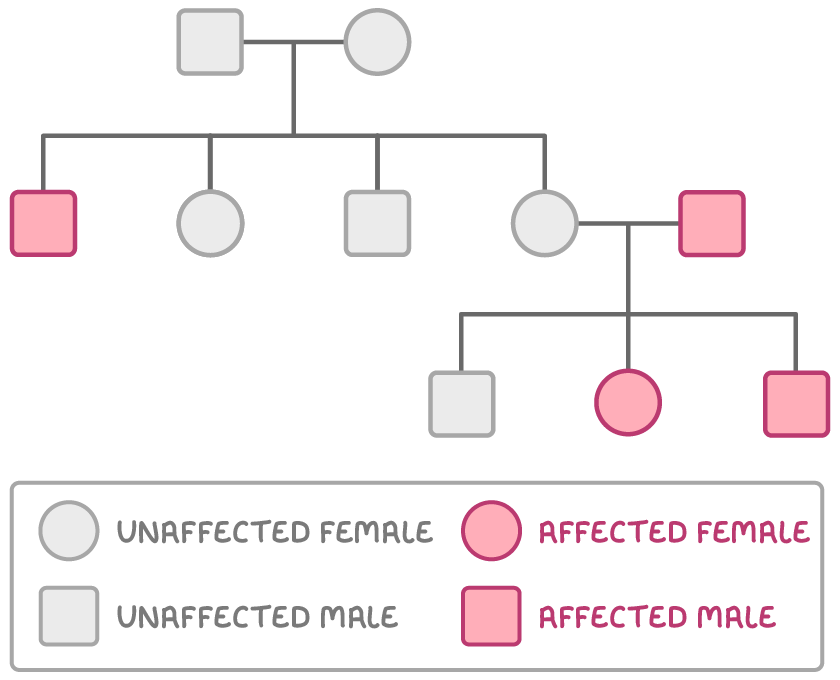Sex Linkage
This lesson covers:
- The inheritance of sex in humans
- What sex linkage means
- How to interpret pedigree charts
The inheritance of sex in humans
Humans have 23 pairs of chromosomes. 22 of these pairs are autosomes, which are identical in both males and females. The 23rd pair are the sex chromosomes. These differ between the sexes and determine an individual's sex.
The sex chromosomes come in two forms:
- X chromosome - This is found in both males and females.
- Y chromosome - This is found only in males.
Female body cells have two X chromosomes (XX), so all gametes (egg cells) produced by females contain an X chromosome.
Male body cells have one X and one Y chromosome (XY), so gametes (sperm cells) produced by males may contain either an X or Y chromosome.
Sex linkage
Genes located on the X or Y chromosomes are termed sex-linked genes. The X chromosome carries the majority of these genes due to its larger size, making most sex-linked genes X-linked.
Recessive alleles on the X chromosome tend to appear in the phenotype more often in males, as there is no corresponding allele on the Y chromosome to mask them.
Sex linkage in haemophilia
Haemophilia is an example of an X-linked recessive disorder, which is one that is caused by a defective gene on the X chromosome.
Specifically, haemophilia arises from a recessive X-linked allele that alters the DNA sequence coding for a crucial blood clotting protein. This faulty allele can cause reduced blood clotting, leading to excessive bleeding. Without appropriate treatment, haemophilia can be life-threatening.
It can be inherited even if both parents do not show symptoms, for instance if the mother is a carrier, as shown below.

Inheritance of haemophilia:
- It mainly affects males - Males don’t have a second X chromosome to mask the faulty allele.
- It doesn’t often affect females - Females must inherit a faulty allele from both their mother and father.
- It is always inherited from the mother in males - Males always inherit the X chromosome from their mother.
- It is mainly inherited from carrier mothers - They have a healthy allele (XH) so can produce enough clotting protein, but also carry a haemophilia allele (Xh) that can be passed on.
- Affected father’s can only pass it on to daughters - Sons only inherit a Y chromosome from their father, but daughters inherit an X chromosome (which may be affected) from their father.
Interpreting pedigree charts
Pedigree charts like the one below offer a visual method to track phenotypes and familial relationships over generations, aiding in the study of inheritance patterns.

Typical aspects of pedigree charts in tracing sex-linked inheritance include:
- Males represented by squares and females by circles.
- Lines show relationships between parents and offspring.
- Shading within a shape indicates the presence of a trait, like haemophilia, in the phenotype.
Analysing pedigree charts helps to identify probable carriers and assists in estimating risk, guiding genetic counselling and decisions related to reproduction.